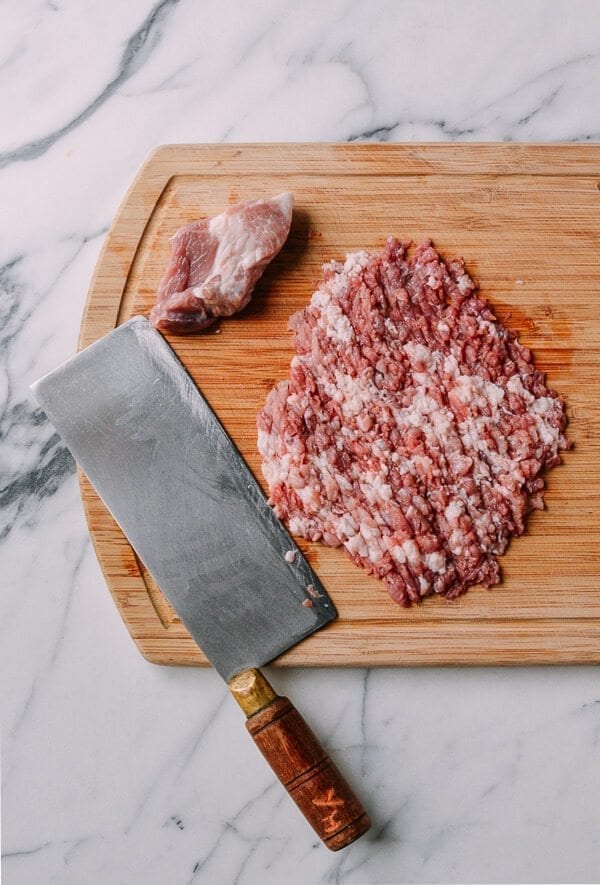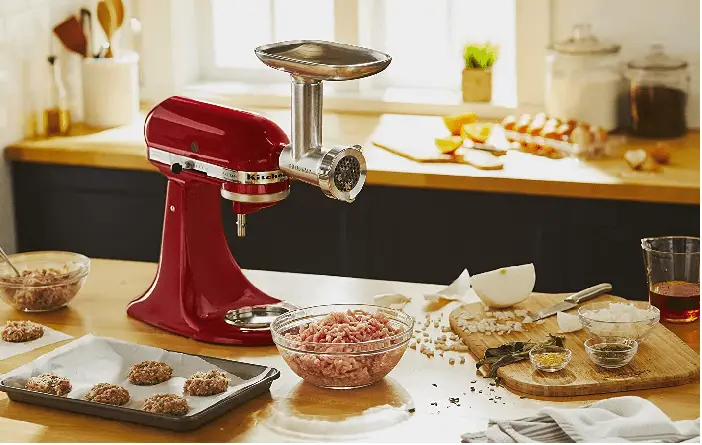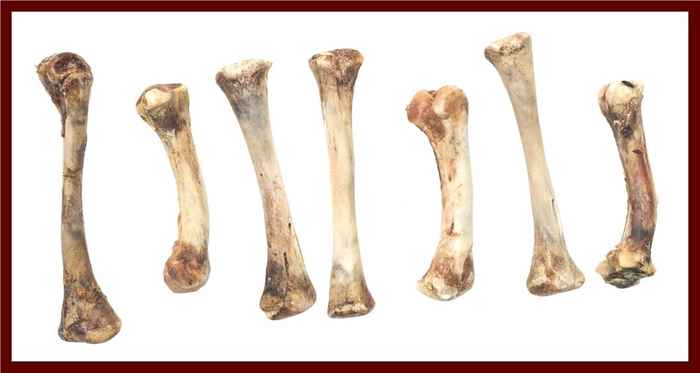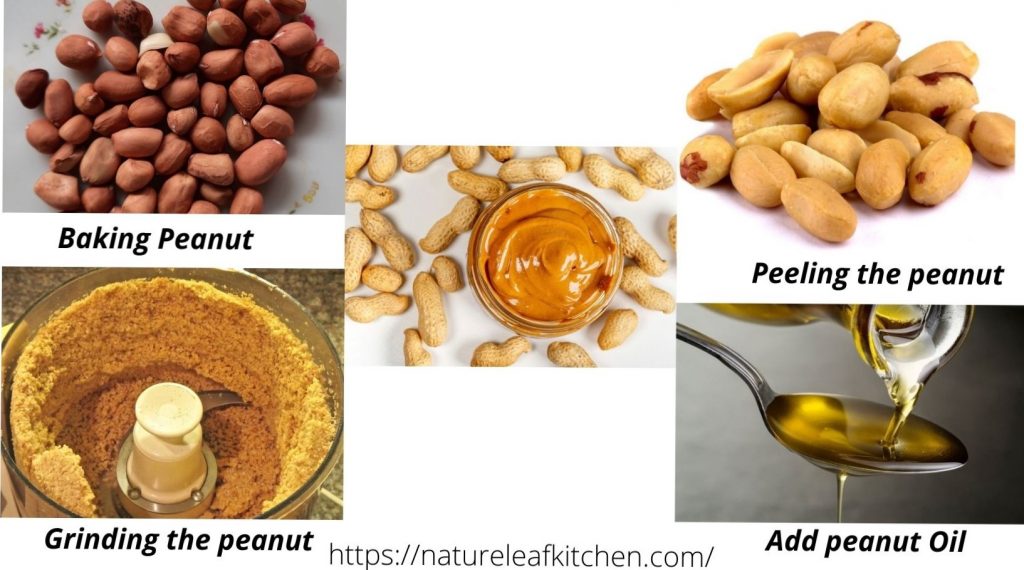Yes, you can grind meat in a blender. Blenders are versatile tools capable of processing meat.
Grinding meat at home can be both a necessity and a step towards healthier eating. A blender, commonly used for smoothies and purees, can also serve as an effective meat grinder when a traditional meat grinder is not available. By using the pulse function and working in batches to ensure consistency, home cooks can achieve a fine or coarse grind, depending on their preference.
This method is particularly useful for customizing blends of meats for dishes like burgers, meatballs, or sausages. It’s important to cut the meat into small chunks and to remove bones and excess fat for optimal results, ensuring your blender can handle the task without damage. Home-blended ground meat allows for more control over the fat content and freshness, elevating homemade recipes with that personal touch.

Myth Or Reality: Grinding Meat With A Blender
The debate surrounding the use of blenders versus traditional meat grinders is multifaceted. Many people wonder about a blender’s ability to handle the task of grinding meat. While it is true that blenders are typically designed for liquid-based tasks, such as making smoothies or pureeing soups, they can also be versatile kitchen tools. Blender capabilities can vary widely depending on the model and its power.
Some high-powered blenders can indeed grind meat effectively. They must be used carefully and correctly to achieve good consistency. Often, the meat needs to be cut into smaller pieces before blending. Sharp blades and a strong motor are essential for processing meat without straining the blender’s mechanism. It is important to note that not all blenders have the required strength, and using a less powerful blender could result in poorly ground meat or damage to the appliance.
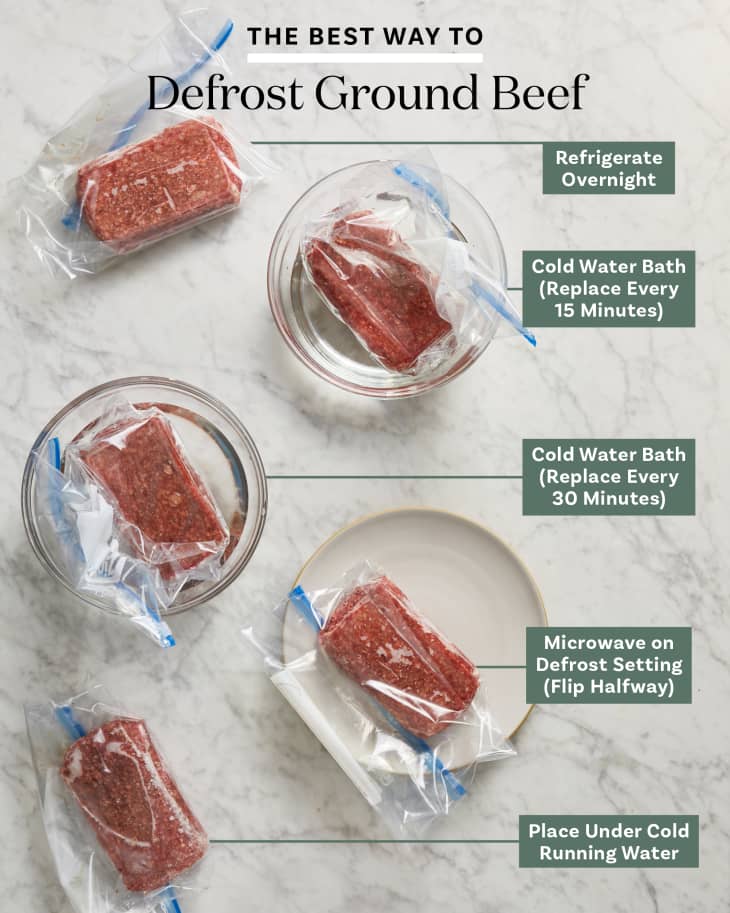
Credit: www.thekitchn.com
How to Grind Meat in a Blender
Grinding meat in a blender is a quick and convenient way to prepare ground meat at home, especially if you don’t have a meat grinder. Here’s a step-by-step guide to help you grind meat efficiently:
Materials Needed:
- Fresh meat (beef, pork, chicken, etc.)
- Sharp knife
- Blender
- Cutting board
- Freezer
- Bowl
Instructions:
- Choose the Right Meat:
- Select fresh, high-quality meat with some fat content for better texture and flavor.
- Prepare the Meat:
- Trim Excess Fat and Sinew: Use a sharp knife to remove any excess fat, sinew, or connective tissue.
- Cut into Cubes: Cut the meat into small, even cubes (about 1-inch pieces). This helps the blender process the meat evenly.
- Partially Freeze the Meat:
- Freeze the Cubes: Spread the meat cubes in a single layer on a baking sheet and place them in the freezer for about 20-30 minutes. The meat should be firm but not frozen solid. This step helps the blender blades cut through the meat more efficiently without turning it into a paste.
- Prepare the Blender:
- Assemble the Blender: Ensure your blender is clean and dry. Use the regular blending blades, not the dough or ice-crushing blades.
- Grind the Meat:
- Work in Batches: Place a small batch of partially frozen meat cubes into the blender. Avoid overloading to ensure even grinding.
- Pulse the Blender: Use the pulse setting to chop the meat. Pulse in short bursts, checking the consistency regularly. Aim for coarse ground meat rather than a fine paste.
- Check Consistency: Stop pulsing once you reach the desired consistency. Pour the ground meat into a bowl and repeat with the remaining meat cubes.
- Combine and Mix:
- Mix the Meat: Once all the meat is ground, gently mix it in a bowl to ensure an even distribution of fat and lean meat.
- Store or Use Immediately:
- Use Fresh: If using the ground meat immediately, proceed with your recipe.
- Store Properly: If not using right away, portion the ground meat into airtight containers or freezer bags and refrigerate or freeze promptly.
Tips:
- Avoid Overprocessing: Overprocessing can turn the meat into a mushy paste, so use the pulse function and check frequently.
- Add Flavor: If desired, you can add seasonings or herbs to the meat cubes before grinding.
- Clean Thoroughly: Ensure you clean the blender thoroughly after grinding meat to avoid cross-contamination and maintain hygiene.
Grinding meat at home using a blender can be quick and easy, providing you with fresh and flavorful ground meat for various recipes.
Selecting The Right Blender
Selecting the right blender for grinding meat is essential to achieve the best results. Focus on a blender with high-power and robust blades; these are crucial for cutting through tough meats. Look for a unit that comes with multiple speed settings to control the grind’s coarseness. The blender should have a sturdy base to handle the vibrations and a large enough capacity to accommodate your meat grinding needs.
| Brand | Model | Power(W) | Capacity (L) | Blade Material |
|---|---|---|---|---|
| Vitamix | 5200 Blender | 1490 | 2 | Stainless Steel |
| Ninja | Professional BL610 | 1000 | 2.1 | Stainless Steel |
| Blendtec | Total Classic Original | 1560 | 2.5 | Stainless Steel |
Types Of Meat You Can Grind
Grinding meat in a blender is indeed possible. You must select the right type of meat for good results. Beef chuck, pork shoulder, and chicken thighs are top choices. These cuts balance meat and fat well, ensuring a smooth grind. Lean meats with less connective tissue also work well.
| Meat Type | Best Cuts for Blending |
|---|---|
| Beef | Chuck, Sirloin |
| Pork | Shoulder, Loin |
| Chicken | Thighs, Breasts |
Game meats and shanks tend to be tougher. They likely will not blend well. Meats with lots of sinew and silver skin can damage your blender. They will leave unpleasant textures in the grind. Always trim the excess off before you blend.
Preparation Before The Grind
Getting your meat ready for blending involves a few key steps. Chopping the meat into small, evenly sized pieces ensures a uniform grind. Aim for chunks about one to two inches in cube size.
Before you start, know the freeze trick: partially freezing your meat. This secret technique is crucial. It prevents the meat from overheating during the blend. You’ll want your pieces cold, preferably semi-frozen, for optimal texture and quality. Just remember, 30 minutes in the freezer is usually enough for the perfect chill.
Step-by-step Meat Grinding
Grinding meat in a blender requires certain tools. Make sure you have a powerful blender, fresh meat, a cutting board, and a knife. Cut the meat into small cubes. It helps the blender work smoothly and efficiently.
Place the meat cubes into the freezer for about 30 minutes. Slightly frozen meat blends better and doesn’t smear. Always keep the blender’s lid on during blending. It ensures everything stays safe and clean. Use the pulse function to grind to the desired consistency.
Tips For Perfect Ground Meat Consistency
Understanding the difference between pulsing and blending ensures an ideal texture for ground meat. Pulsing is like tapping your foot quickly. It’s a short burst that chops the meat without making it mushy. Blending, on the other hand, is like holding down a guitar string. It keeps grinding the meat until you stop.
Controlling the blender’s speed is equally critical. Start slow, then increase the pace. The key is not to overdo it. For a coarse grind, a few quick pulses will do. Looking for a finer grind? Run the blender a bit longer but avoid turning your meat into a paste. To prevent this, check frequently and stop as soon as you reach the desired consistency.
Creative Uses For Your Blender-ground Meat
Blenders aren’t just for smoothies! Yes, you can turn chunks of fresh meat into ground meat using a blender. Perfect for homemade burger patties, this method is quick. Do ensure your blender is strong enough though. Cut the meat into small pieces for best results.
Try making unique recipes like spiced lamb burgers or turkey and quinoa patties. Creativity knows no bounds with this blender hack. Plus, you control the quality and type of meat you’re grinding. That means healthier, tastier meals for you and your family!
- Fresh beef for classic patties
- Chicken mixed with herbs for lighter fare
- Pork combined with apple for a sweet twist
:max_bytes(150000):strip_icc()/__opt__aboutcom__coeus__resources__content_migration__serious_eats__aht.seriouseats.com__images__20110401-burger-lab-grinding-primary-chop-63c23b2d3e7d47faba0acf179e020a14.jpg)
Credit: www.seriouseats.com
Cleaning And Maintenance Post-grinding
After grinding meat in a blender, proper cleaning is crucial. Use warm soapy water to wash the blender jar. Rinse it well to remove any soap residue.
For sanitizing, mix a solution of one tablespoon of bleach in a gallon of water. Submerge the jar, lid, and blade assembly for several minutes. Rinse them with clean water and let them air dry.
Blender blades must stay sharp for effective grinding. Avoid dishwashers as they can dull the blades. Instead, use a soft brush and gentle dish soap to clean them. Dry thoroughly immediately after washing. This maintains a sharp edge for the next use.
Common Blending Mistakes To Avoid
Grinding meat in a blender can seem handy, but errors may arise. Packing too much meat can strain the motor. It’s crucial to cut meat into smaller pieces. This ensures even results and guards the blender’s life. A good rule is to fill only halfway. This allows blades to move freely. Also, remember to check your blender’s manual. It tells you the max it can handle. Always paying attention to these blender limits and safety is key. This stops accidents and keeps your appliance long-lasting.
Advanced Techniques For Master Meat Grinders
Mixing different types of meat can create unique and flavorful combinations. By using a blender, chefs can experiment with blends like beef with pork or chicken with turkey. It’s crucial to cut meats into small chunks before blending to ensure even grinding. Keeping the meat cold during the process helps in maintaining texture and flavor.
Introducing spices and seasonings while grinding meat can enhance flavors deeply. Blending in whole or ground spices like peppercorns, garlic powder, or fresh herbs can imbue the meat with seasonings from the inside out. This creates a more consistent taste in each bite compared to seasoning after grinding.

Credit: cheflolaskitchen.com
Benefits of Grinding Meat in a Blender
Grinding meat at home using a blender offers several advantages over buying pre-ground meat from the store. Here are some key benefits:
1. Freshness and Quality Control:
- Better Quality: You have control over the quality of meat you use, ensuring it’s fresh and free from unwanted additives.
- No Preservatives: Unlike store-bought ground meat, your homemade ground meat is free from preservatives and fillers.
2. Customization:
- Choice of Cuts: You can choose your preferred cuts of meat, allowing you to create blends with the right balance of fat and lean meat.
- Seasoning and Flavors: You can add your seasonings, herbs, and spices to the meat before grinding, enhancing flavor according to your preferences.
3. Cost-Effective:
- Savings: Buying whole cuts of meat and grinding them at home can be more cost-effective than purchasing pre-ground meat.
- Bulk Preparation: You can buy meat in bulk, grind it, and store it in portions, saving money and time.
4. Texture Control:
- Consistent Texture: Grinding meat in a blender allows you to control the texture, whether you want it coarse, medium, or fine.
- Versatility: You can grind different types of meat, including beef, pork, chicken, and turkey, to create custom blends for various recipes.
5. Hygiene and Safety:
- Cleanliness: Grinding meat at home reduces the risk of contamination compared to store-bought ground meat, which may pass through multiple hands and machinery.
- Immediate Use: You can grind the meat just before cooking, ensuring it’s as fresh as possible.
6. Convenience:
- Quick and Easy: Using a blender makes the process quick and easy, especially if you don’t have a dedicated meat grinder.
- Minimal Equipment: You don’t need to invest in additional kitchen gadgets; a regular blender suffices for small batches.
7. Creative Cooking:
- Recipe Experimentation: Grinding your meat allows you to experiment with different recipes and meat combinations, such as blending beef and pork for meatballs or adding bacon to ground beef for burgers.
- Homemade Sausages and Patties: You can make your sausages, burgers, and meatloaf mixes tailored to your taste.
Grinding meat at home using a blender not only enhances the quality and flavor of your dishes but also provides greater control over ingredients and preparation methods, leading to healthier and tastier meals.
FAQs
Can Blenders Effectively Grind Various Meats?
Most blenders can effectively grind different types of meat. However, it is essential to cut the meat into small pieces and to use the pulse function for best results. Always ensure the meat is semi-frozen to prevent mushiness.
Is A Blender As Good As A Meat Grinder?
A blender can grind meat, but it may not match a meat grinder’s texture. Meat grinders can provide a consistent and uniform grind. Blenders work best for small batches and may require you to stop and stir frequently.
What Preparations Are Needed Before Grinding Meat?
Before grinding meat in a blender, you should cut it into small, even chunks and partially freeze them. This helps maintain the quality of the meat and ensures the blades can cut through easily, reducing strain on the blender motor.
Can Grinding Bones Damage A Blender’s Blades?
Grinding bones in a blender is not advisable. Blades in blenders aren’t typically designed for such hard materials and could become dull or damaged. Stick to boneless meat to ensure the longevity of your blender.
Conclusion
Grinding meat in a blender is indeed possible, with certain caveats. Always ensure the blender is powerful enough and the meat is cut into small pieces. Use short pulses to prevent overheating. This method opens doors for those without a meat grinder at home.
Happy blending and cooking!
